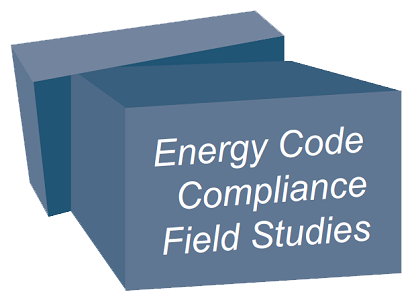Considerations for Implementation
Data Collection
For single-family residential building studies, data collection consists of visiting a statistically significant sample of buildings that are under construction (pre-drywall) and different residential buildings where construction has been completed, but which are not yet occupied. The data collectors will collect a specified number of data points using a data collection instrument developed by U.S. DOE.
It can be difficult to obtain access to construction sites. In some cases:
- State Energy Offices provided introduction letters to explain the study.
- working with state homebuilders’ associations helped improve access and eased concerns about the nature of the data collection and the project.
It is important to emphasize that the data collected will be anonymous and is not used for code compliance checks for the construction sites visited. The study methodology is specifically designed to ensure that the data collectors will not be able to determine if the home they visit is code compliant, but only to gather data to establish a statistically significant sample.
Addressing home builders’ concerns about these questions directly may ease the data collection process.
Data Recording
Data about construction sites is typically collected using a tablet computer or printed worksheets using a data collection instrument developed by the Pacific Northwest National Laboratory (PNNL). In some cases, photos of complex or unusual data points can help answer quality assurance (QA) and quality control (QC) questions from project partners. Data is typically transmitted to PNNL in spreadsheets. Once all data is collected, a QA and QC process is conducted. Data collectors may be asked to explain omissions or answer questions about unusual data points.
Data Evaluation
Data evaluation is a key step in the process of conducting a successful study. PNNL is responsible for data evaluation services using proprietary analytical tools.
Training and Education Efforts Based on Study Results
When statistical analysis is complete, the study lead will receive it with code compliance details focused on eight key areas of the building that determine most of its energy efficiency. This analysis will describe how current building practices align with the state’s current building code. If compliance is less than expected in certain construction practices, training can be targeted to the appropriate audience to align those specific practices with code requirements.
Results of the energy code field study may be used by a state to inform decisions related to energy code updates in current or future code cycles. For example, if a state finds that new construction consistently exceeds requirements, the state may wish to increase the code requirement for that building element in line with the findings.

